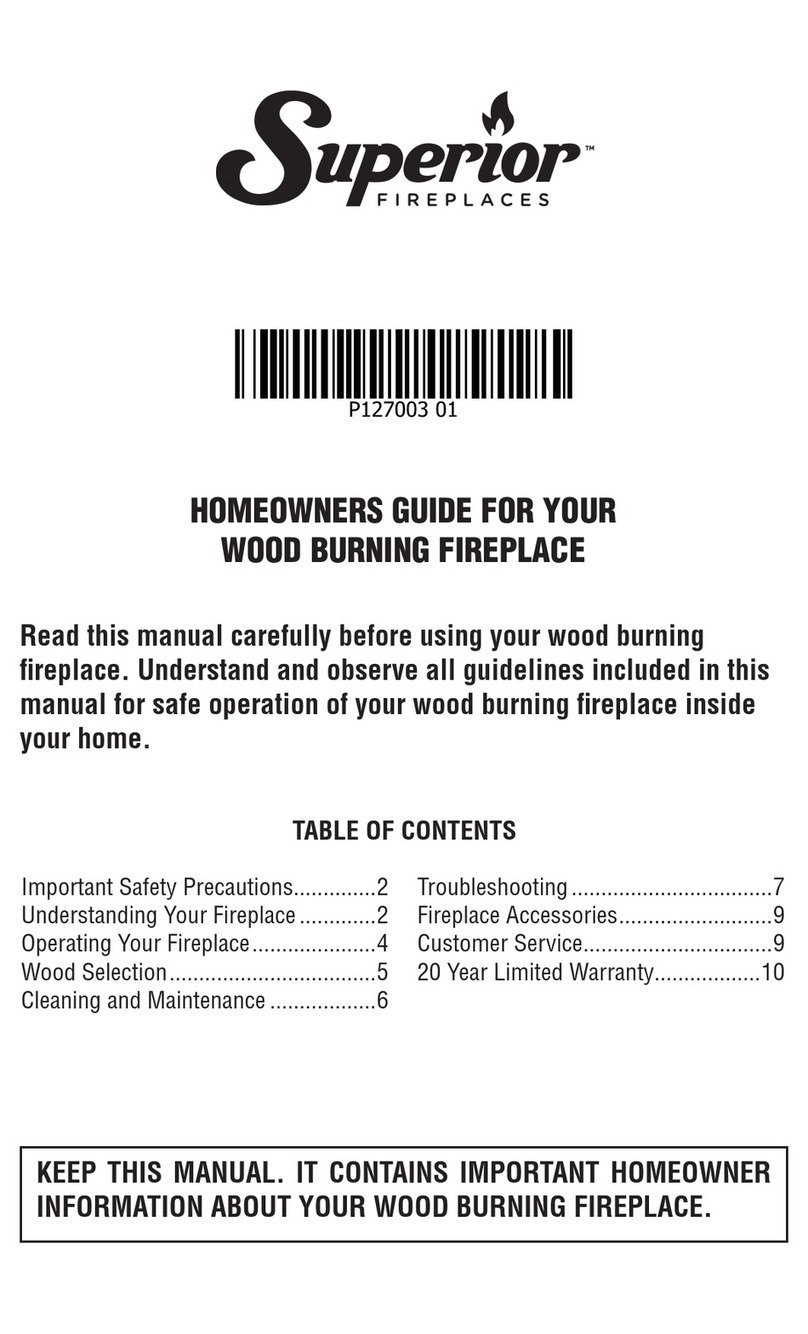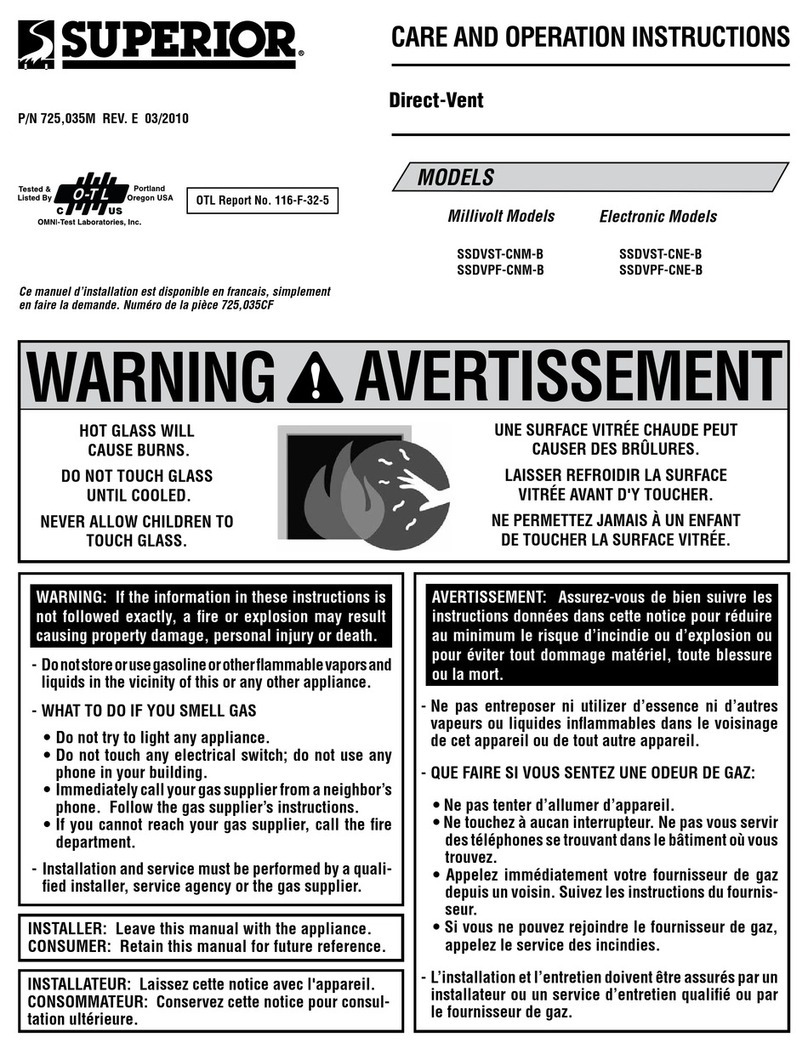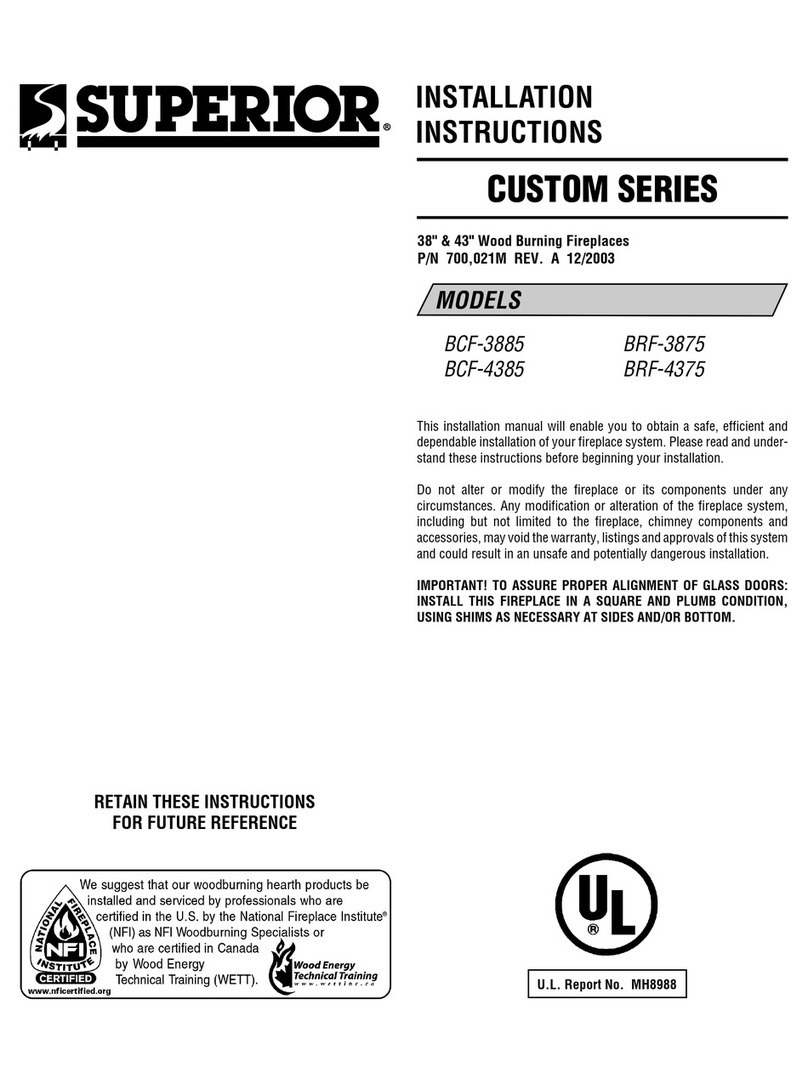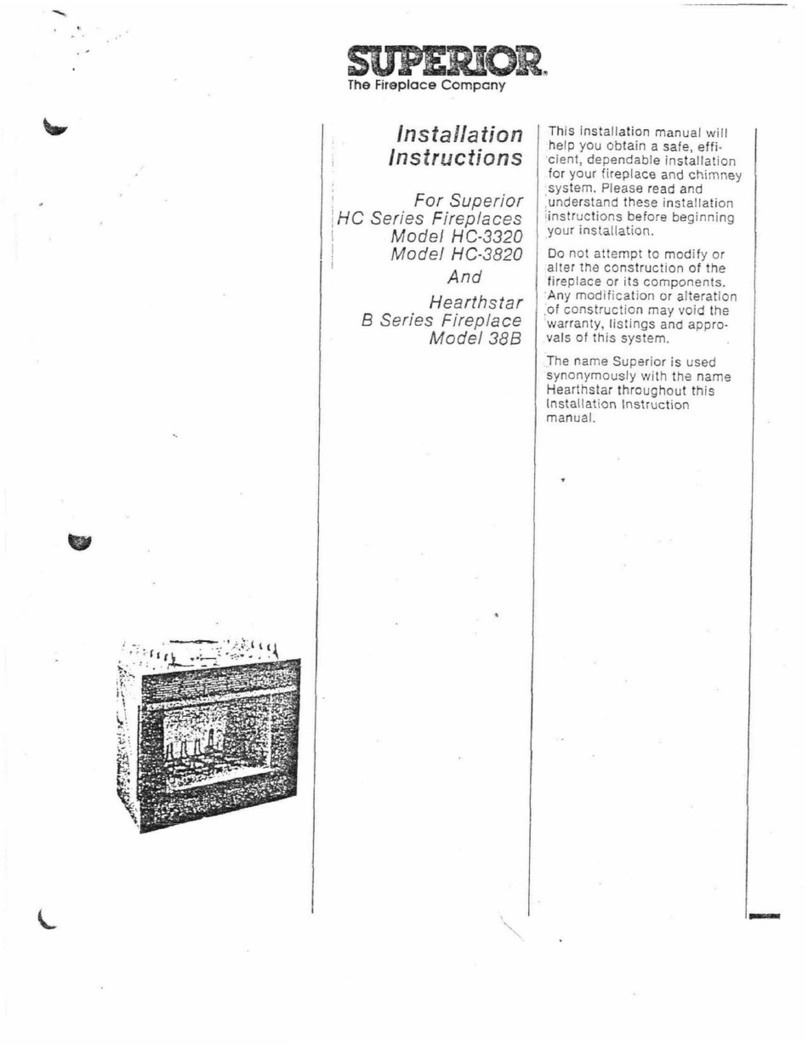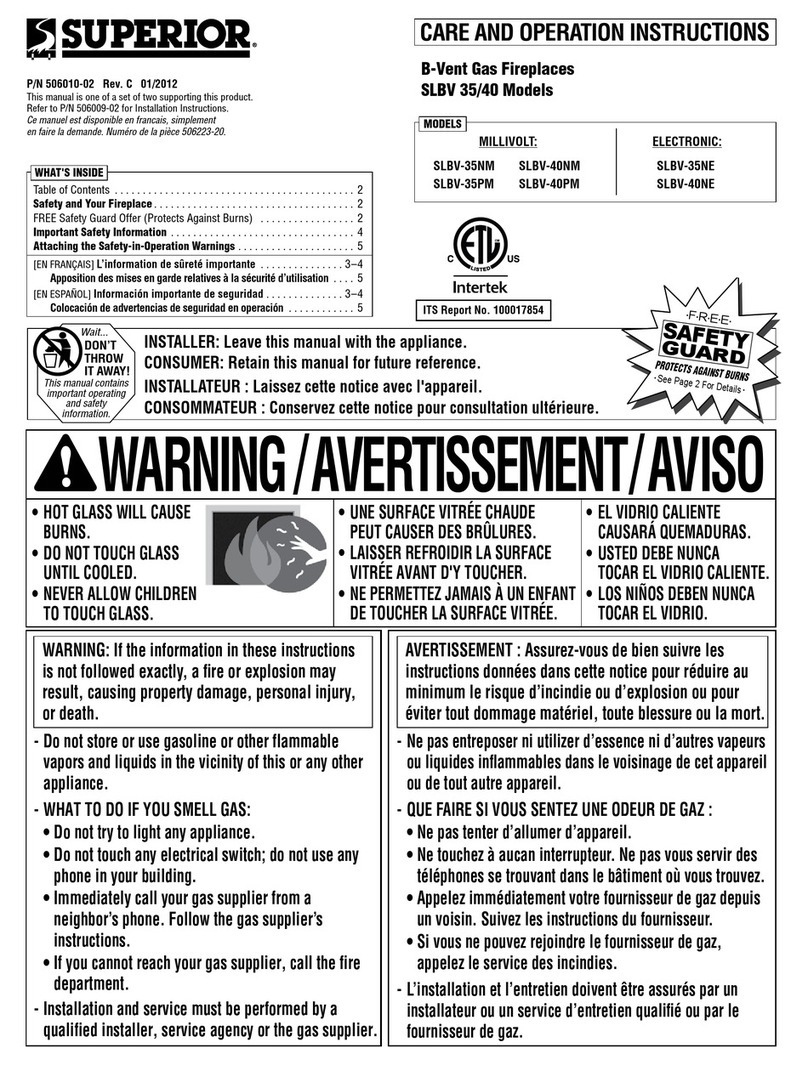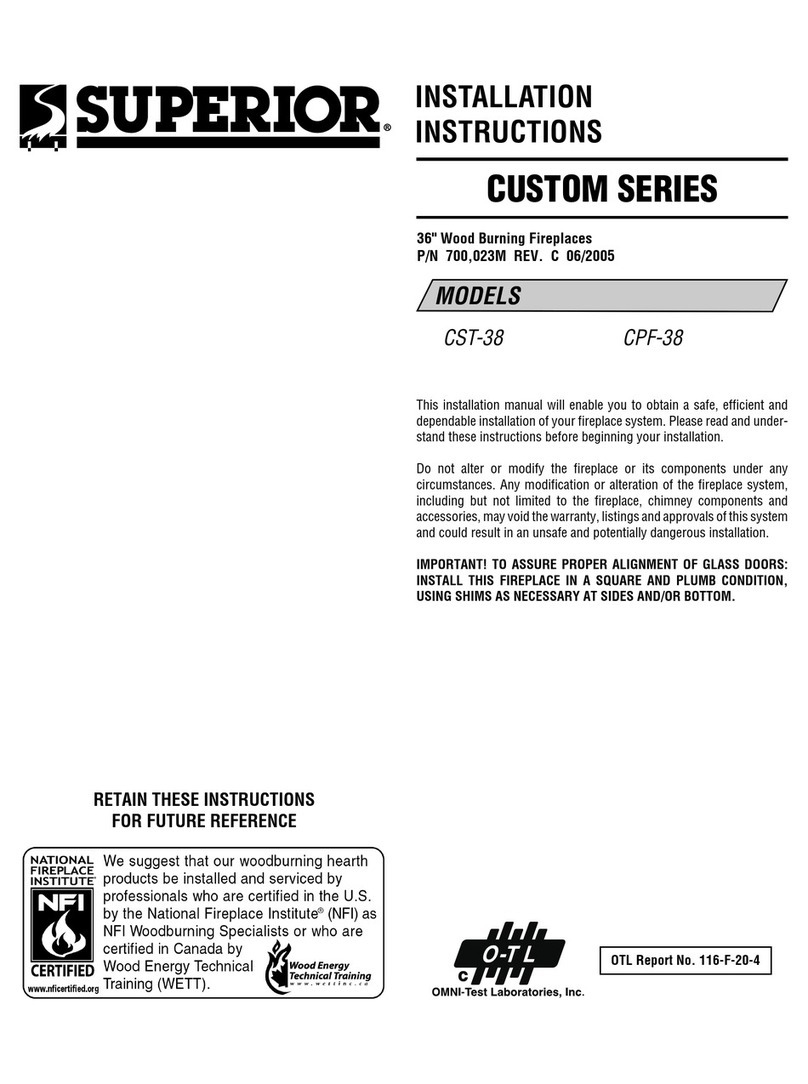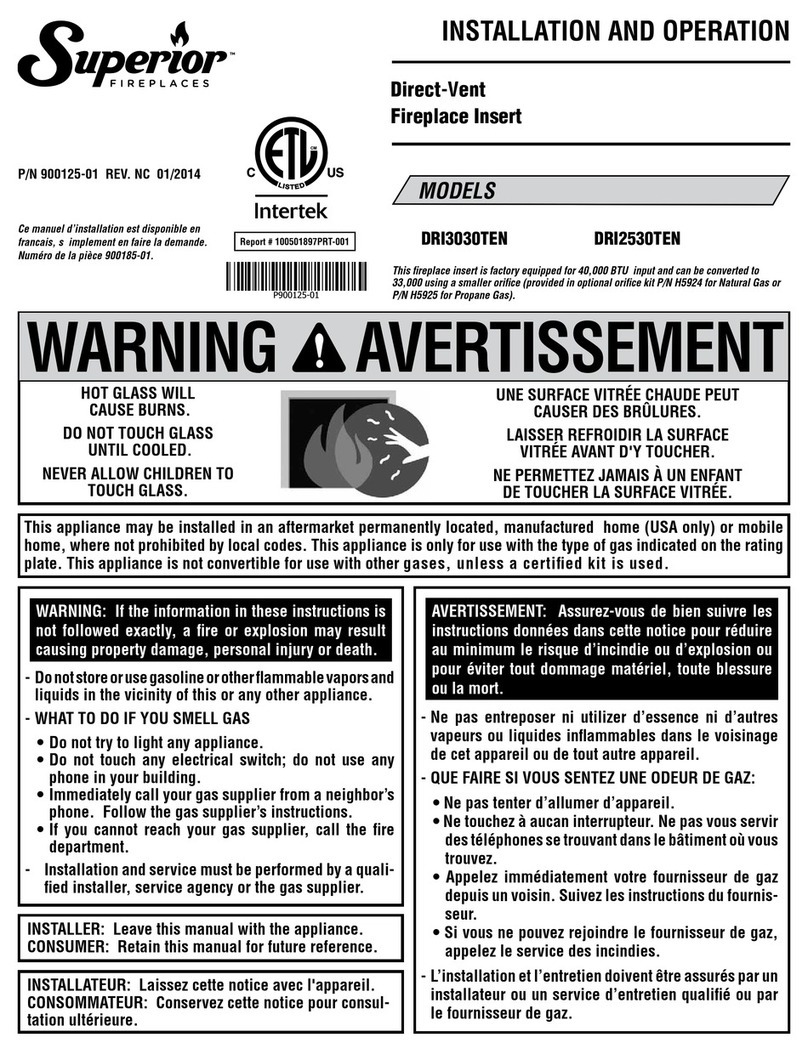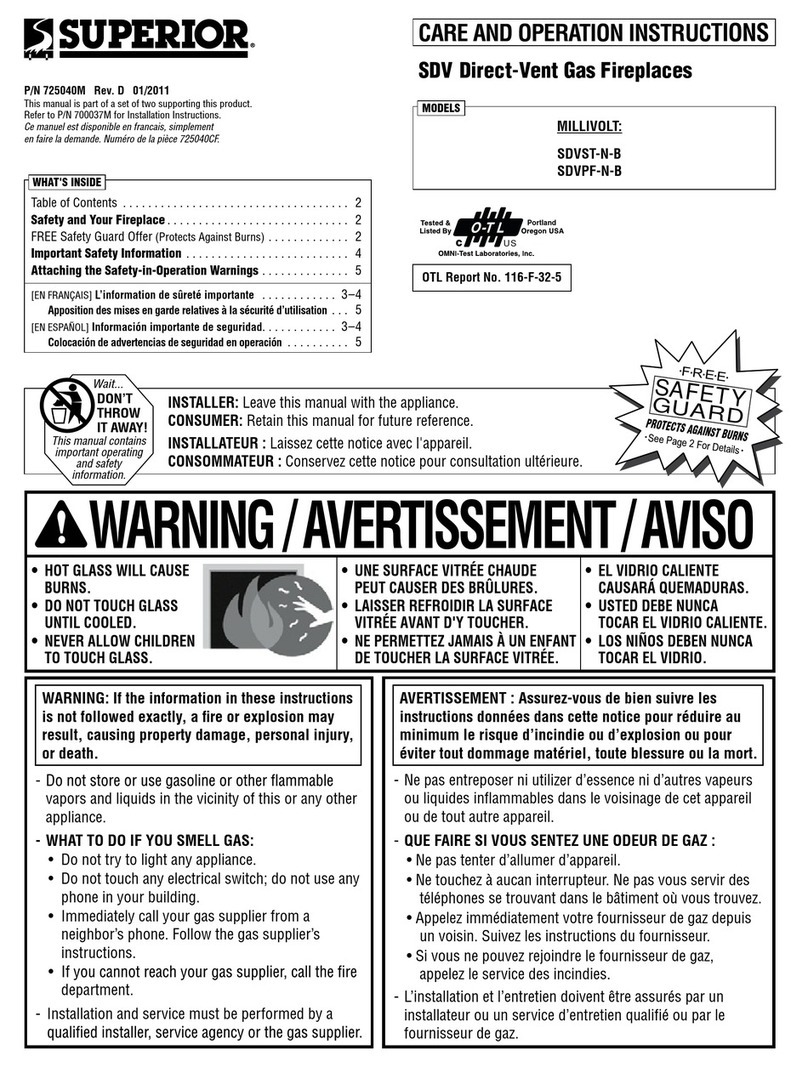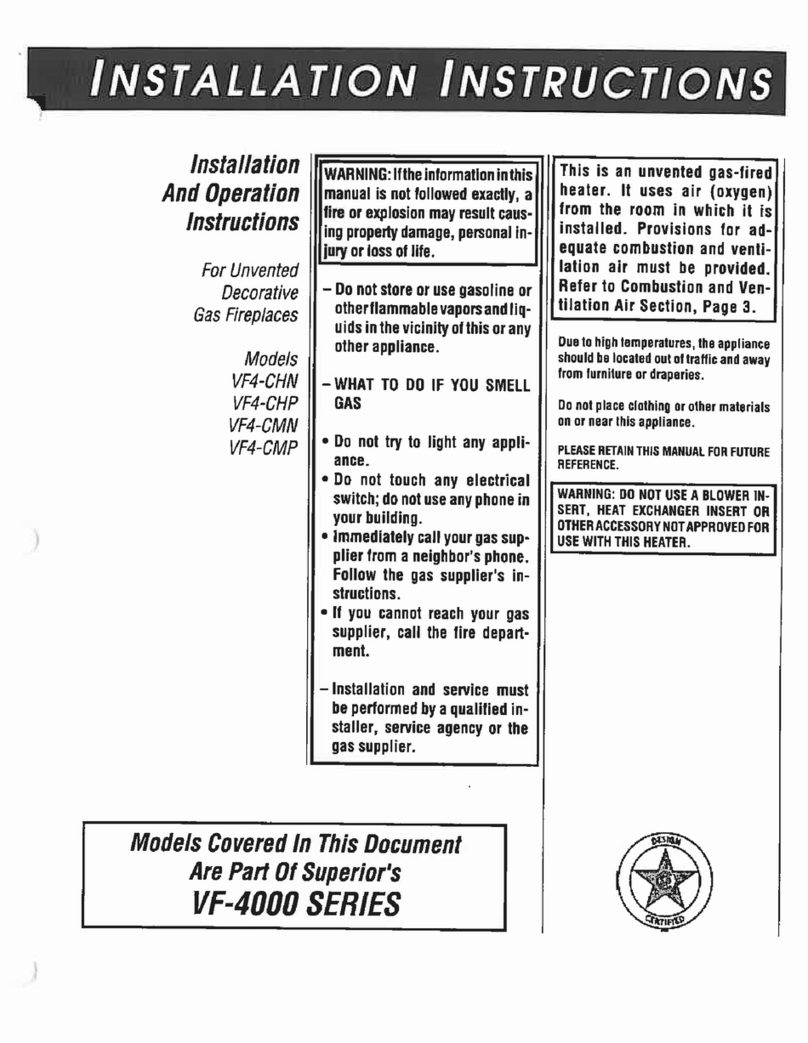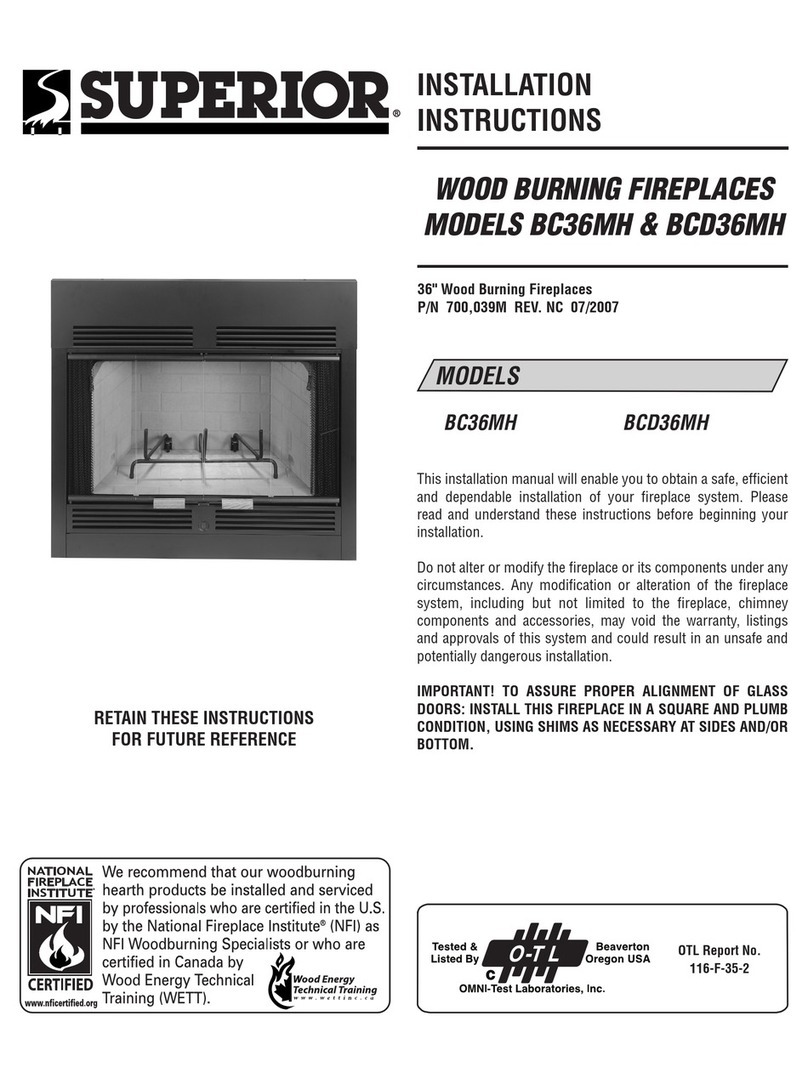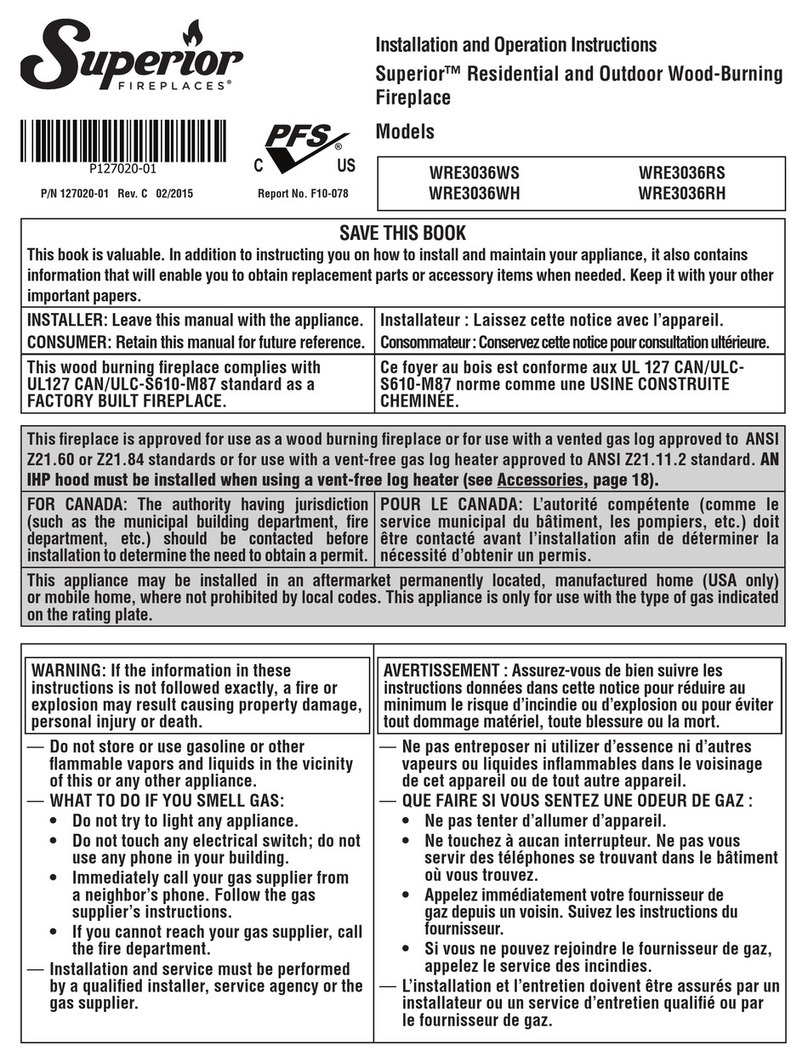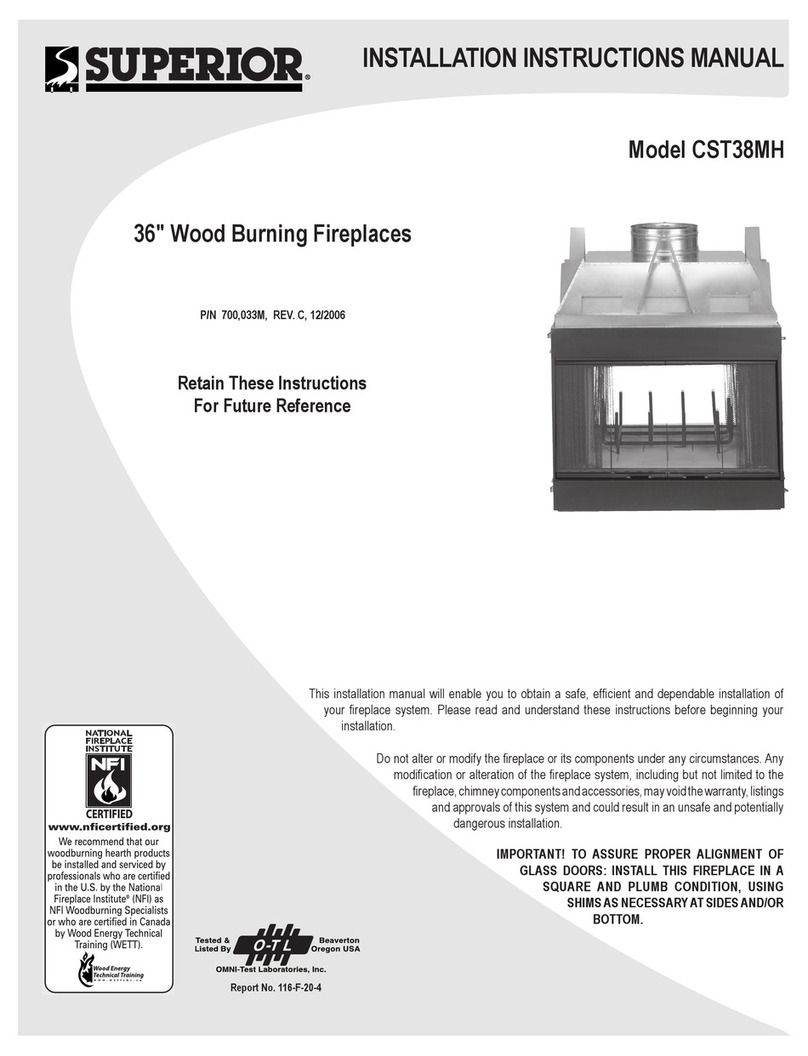
2
TABLE OF CONTENTS
Packaging .........................................Page 2
Introduction ......................................Page 2
General Information..........................Page 2
Requirements for the
Commonwealth of Massachusetts .Page 4
New York City Approval..................... Page 4
Cold Climate Insulation.....................Page 5
Manufactured Homes........................Page 5
Location............................................Page 5
Vent Termination Clearances ............Page 6
Appliance and Vent Clearances ........Page 8
Detailed Installation Steps.................Page 9
Typical Installation Sequence ...........Page 9
Step 1. Framing.................................Page 9
Fireplace and Framing SpecificationsPage
10
Step 2. Routing Gas Line ..................Page 12
Step 3. Install the Vent System.........Page 13
Vent Restrictor Installation................Page 13
Vertical Termination Systems............Page 14
Vent Section Length Chart ................Page 14
Vertical Vent Figures and Tables........Page 18
Horizontal Termination System .........Page 20
Horizontal Vent Figures and Tables ...Page 22
Venting Using Flexible Vent Pipe.......Page 25
Step 4. Field Wiring.........................Page 26
Step 5. Optional Blower Kit Wiring..Page 27
Step 6. Connecting Gas Line...........Page 28
Control Compartment Access ...........Page 28
Step 7. Verifying Appliance
Operation ......................................Page 29
Step 8. Install logs, Volcanic Stone
and Embers ........................Page 29
Step 9. Installing Glass Doors ........Page 31
Step 10. Burner Adjustments ............Page 31
Step 11. Hood Installation.................Page 32
Finishing Requirements ....................Page 32
Step 12. Attaching Safety-in-
Operation Warnings .....................Page 33
Installation Accessories ....................Page 34
Gas Conversion Kits.........................Page 37
Please read and understand these
instructions before beginning your
installation.
PACKAGING
The assembled vented gas fireplace heater is
packaged with:
1 - One log set located in firebox area.
2 - Oneenvelopecontainingtheliteraturepack-
age,locatedinthe fireboxwhich consistsof
the care and operation manual, installation
instructions,safetyinoperation warningla-
bels,warranty, nailingflanges (8forSDVST
models and 4 for SDVPF models).
3 - One vent restrictor (to be applied as shown
on Page 13; restrictor is taped to the en-
velope).
4 - Hoods (2 for SDVST models and 3 for
SDVPF models), taped to the top of the
fireplace.
5 - Carton Support (must be removed from
the control compartment prior to first
burning).
6 - One fuel conversion kit (Nat. Gas to LP
Gas) located in the control area.
7 - One plastic bag of glowing embers and a
plastic bag of volcanic stone located in the
control compartment.
INTRODUCTION
These Millivolt appliances have a millivolt gas
control valve with piezo ignition system. If any
optional accessories that will require electrical
power are to be installed, the electrical power
must be provided at the time of appliance in-
stallation.
These vented gas fireplace heaters are sealed
combustion, air-circulating gas fireplaces
designed for residential applications.
Use Only These Approved Vent Components
- These fireplaces are designed, tested and
listed for operation and installation with, the
following (4-1/2" inner and 7-1/2" outer) vent
components only:
•Secure Vent™ Direct-Vent System Compo-
nents manufactured by Security Chimneys
International,
•Secure Flex™ Flexible Vent Components
manufactured by Security Chimneys Inter-
national and
•Z-FLEX™ Model GA Venting Systems listed
to UL1777 and ULCS635 manufactured by
Flexmaster Canada Limited.
These approved vent system components are
labeled for identification. DO NOT use any other
manufacturer’s vent components with these
appliances.
Children and adults should be alerted to the
hazards of high surface temperature and
should stay away to avoid burns or clothing
ignition.
Lesenfants et les adultes devraient être infor-
mésdesdangersqueposentlestempératures
de surface élevées et se tenir à distance afin
d’éviter des brûlures ou que leurs vêtements
ne s’enflamment.
DO NOT ATTEMPT TO ALTER OR MODIFY
THE CONSTRUCTION OF THE APPLIANCE OR
ITS COMPONENTS. ANY MODIFICATION OR
ALTERATIONMAY VOIDTHEWARRANTY,CER-
TIFICATION AND LISTINGS OF THIS UNIT.
WARNING
Young children should be care-
fully supervised when they are
in the same room as the appli-
ance. Toddlers, young children
and others may be susceptible
to accidental contact burns. A
physicalbarrierisrecommended
if there are at risk individuals in
the house. To restrict access to
a fireplace or stove, install an
adjustable safety gate to keep
toddlers, young children and
other at risk individuals out of
the room and away from hot
surfaces.
AVERTISSEMENT
Lesjeunesenfantsdevraientêtre
surveillésétroitementlorsqu’ils
se trouvent dans la même pièce
que l’appareil. Les tout petits,
lesjeunesenfantsoulesadultes
peuvent subir des brûlures s’ils
viennent en contact avec la sur-
facechaude. Ilestrecommandé
d’installerunebarrièrephysique
si des personnes à risques habi-
tent la maison. Pour empêcher
l’accès à un foyer ou à un poêle,
installez une barrière de sécu-
rité;cettemesureempêcherales
tout petits, les jeunes enfants et
toute autre personne à risque
d’avoir accès à la pièce et aux
surfaces chaudes.
GENERAL INFORMATION


